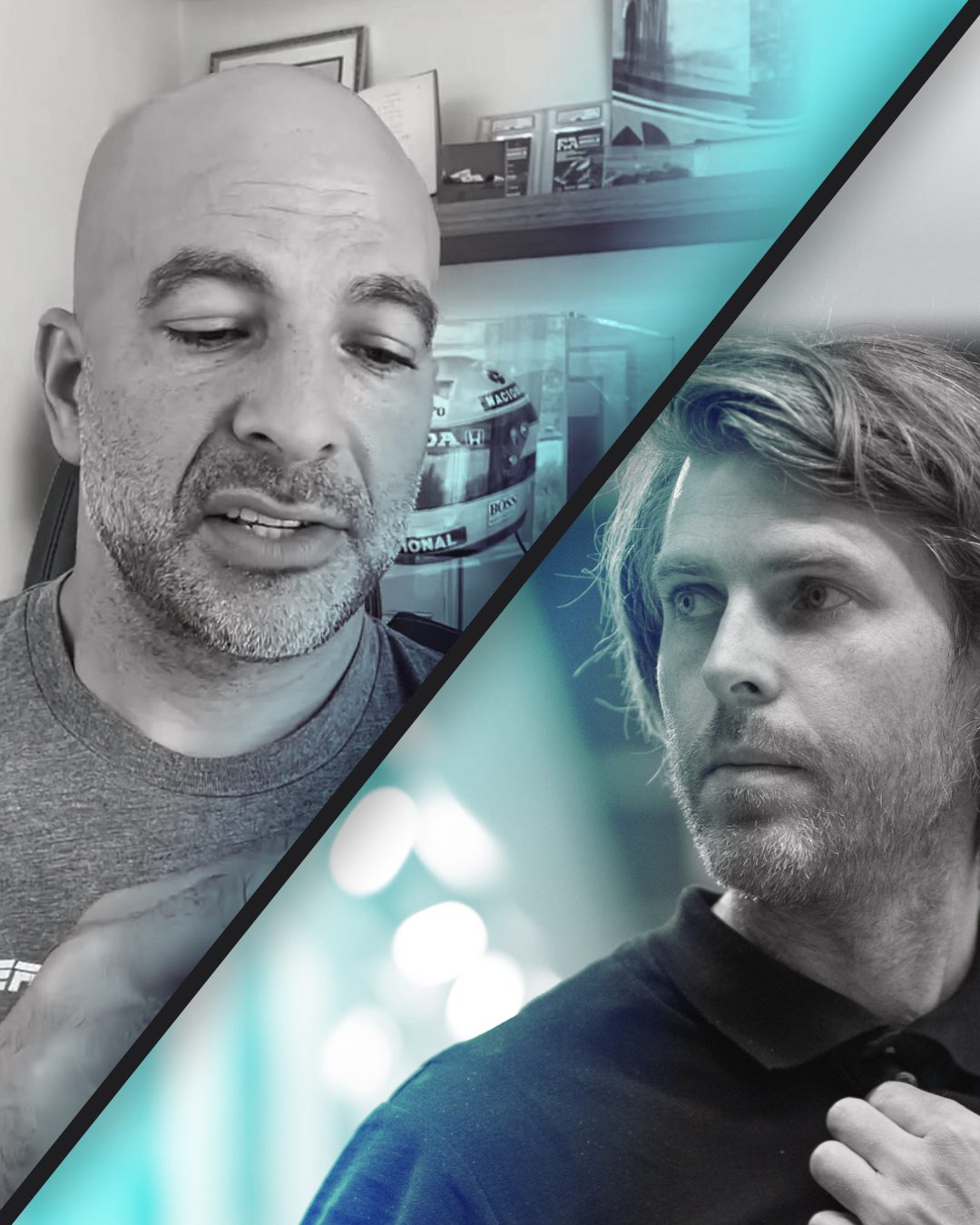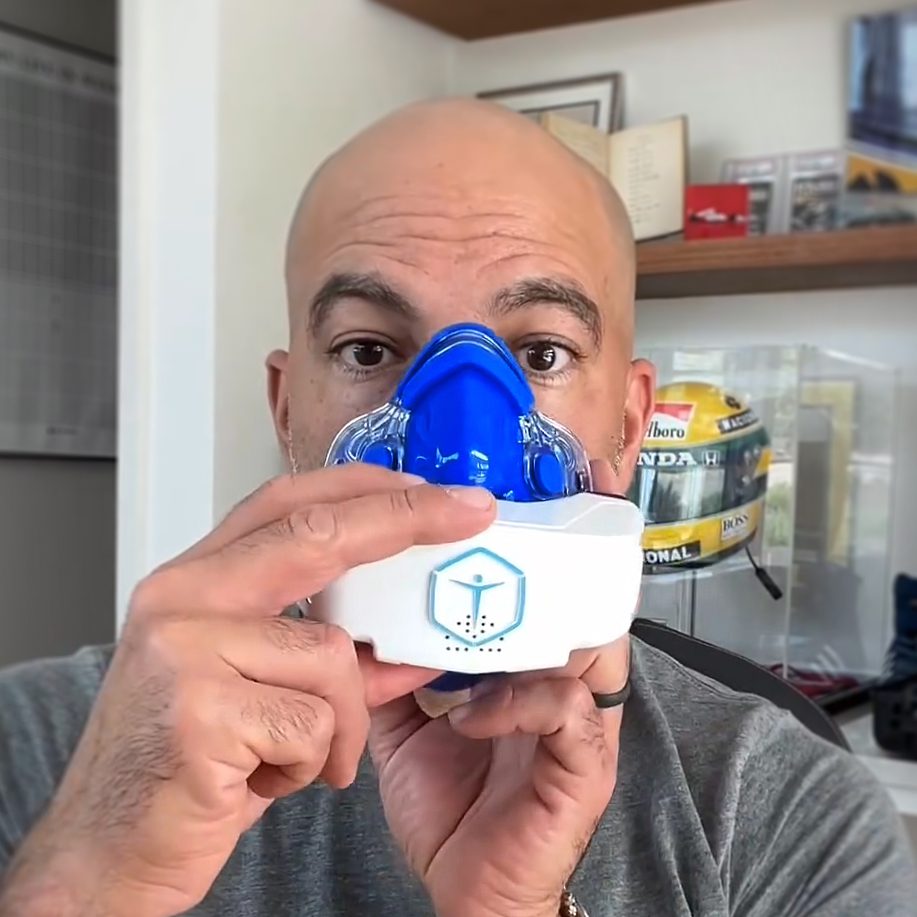Peter Attia – The Drive #294 Peak Athletic Performance
In episode #294 of The Drive with Peter Attia, world-renowned endurance coach Olav Aleksander Bu joins the conversation to discuss how to achieve peak athlete performance.

Summarized by Philip Batterson, PhD., Integrative Physiologist and Endurance Coach
In episode #294 of The Drive with Peter Attia, world-renowned endurance coach Olav Aleksander Bu joins the conversation to discuss how to achieve peak athlete performance.
One key aspect of Olav’s training philosophy is using measurement devices to track his athlete’s physiology and a primary tool he uses is the VO2 Master.
We’ve summarized the key points from five core topics discussed in the podcast.
1. The Relationship of Oxygen to Power Output or Energy Production
- The conversion of substrate (from the food we eat) to ATP (energy) for use in everyday tasks requires oxygen (movement, maintenance of bodily functions, etc).
- Movement requires energy. During movement, energy is made in our muscles through combustion, which requires oxygen, temperature, and substrate.
- Oxygen combustion measurement (called indirect or direct calorimetry) is a measure of how much energy we are creating, then we can measure how much of that energy is being converted to mechanical energy (like in running speed or cycling power) this is called efficiency. Elite-level athletes are very efficient compared to less trained, or sedentary individuals.
- When thinking about human performance, humans can be viewed as a machine or an engine. Every human has energy input (from substrate and oxygen) and output (power and speed), so sometimes it’s better to focus on the big picture rather than getting caught in the weeds of which pathway is stimulated by a certain type of exercise when trying to maximize athletic performance.
- While speed over a certain distance is most important for performance (how fast you complete a race), measuring markers of human physiology can give us indicators of HOW our performance is improving over time.
2. The Importance of Maximal Oxygen Consumption (VO2 max) for Wellness and Quality of Life and How It’s Measured
“VO2 max is the best predictor of lifespan.” – Peter Attia
- This is most likely because VO2 max is an integrative metric that ties all the bodily processes related to oxygen uptake, transport, and utilization together.
- During VO2 max test, the exercise intensity starts easy and is slowly increased until maximal exercise intensity is reached.
- There is a direct connection between exercise intensity and oxygen consumption meaning that as exercise intensity goes up so does oxygen consumption. Until maximal oxygen consumption rate (VO2 max) is reached, the highest number reached during this test is considered your VO2 max.
- VO2 max is reported as an absolute or relative measure. Absolute oxygen consumption rate is how many liters of oxygen you can consume per minute, reported in L/min, and gives us an indication of the size of your aerobic engine. Relative oxygen consumption rate is how many milliliters of oxygen your body can consume per minute relative to your body weight. By normalizing to body weight, we can better compare VO2 max values across individuals.
3. The Benefits of Using Portable Indirect Calorimeters

- Portable metabolic devices use similar technology as metabolic carts found in labs. They both are using galvanic fuel cells.
- “The strength of data comes from exactly what you said, you need to measure regularly all the time and it has to be done in a way that the athlete doesn’t feel it as intrusive or invasive.” Olav Aleksander Bu
- There are differences in measurement techniques between different indirect calorimeters. Mixing chamber devices mix all the air that is sampled over a given amount of time, breath-by-breath devices measure during every breath, and this is where the largest discrepancies in values can come from.
- There is a common misconception that portable metabolic devices are highly inaccurate, with proper calibration Olav claims “When doing back-to-back testing between devices (lab vs VO2 Master) there is a difference of about 50 ml of oxygen between devices” which is very small, if there were large differences Olav said it wouldn’t be worth doing.
- You can measure VO2 during field-based tests. With portable metabolic devices like VO2 Master you can now measure oxygen consumption during your exercise activities. One of the drawbacks to only measuring oxygen consumption in a lab is that it’s an extremely controlled environment that may not fully translate to what you are going to be actually doing during training or a race.
4. How to Train VO2 Max
- Progressive vs regressive intervals refers to how the intervals change throughout the workout. Progressive intervals are where an athlete is increasing power or velocity throughout the workout, not desirable but not the worst. Regressive intervals are where an athlete slows down throughout the workout, this is the worst case scenario and should be avoided. Instead, an athlete should focus on keeping a steady intensity the entire time (in an ideal scenario).
- During the workout focusing on how much work is done (in kilojoules) is the best predictor for adaptation, more work accumulated equals more potential for adaptation.
- Accumulating time (or work) at or near race pace is going to be the best driver or race-specific adaptations, regardless of length or interval rest period.
- Workouts are designed to provide stimulus to the body for adaptation. Thus, individual workouts need to be tailored to the individual.
- Consistency in training over time is going to provide the greatest frequency of stimulus for adaptation. Reducing the workload or leaving some energy in reserve during every workout will help to extend consistency in training which will ultimately lead to more favorable adaptations.
- VO2max is generally limited by our hearts ability to transport oxygen to the working muscle, typically there is an excess ability of our muscle mitochondria to use more oxygen, but our hearts simply cannot get enough to them.
5. Using Internal Physiological Variables (like Lactate) for Exercise Zoning
- Peter trains often in zone 2 (3+ hours per week), and he defines zone 2 as the highest exercise he can sustain blood lactate concentrations at <2 mmol or a rate of perceived exertion (RPE) of 6-7. During zone 2 you should have the ability to maintain talking throughout (not perfectly comfortable). However, lactate can vary HIGHLY between individuals so a strict cut-off of 2 mmol for lactate in zone 2 may not be appropriate for everyone.
- Lactate is a concentration measurement, not a volumetric measurement, meaning that lactate is giving us an amount (concentration) without any other context, no volume of plasma is taken into consideration.
- Lactate is influenced by numerous factors, like hydration status, heat status, how long someone has been exercising for, and what nutrients they are taking in. Lactate will be higher at least at rest if someone has just consumed a carbohydrate-rich meal.
- There is a common misconception that maximal lactate steady state values occur at an RER of 1.0. However, this is highly dependent on what the individual trains amongst other lifestyle factors.
- At rest RER and lactate values are more influenced by non-exercise processes which can shift the numbers higher but during low intensity exercise there can be an initial decrease in both numbers as exercise starts to become more of a stress and overtake the resting metabolic processes.
- Movement is the most important thing for human health, and maintaining exercise consistency over months to years by making it enjoyable is going to be the most important thing for maintaining health!
This conversation between Dr. Peter Attia and Olav is just the tip of the iceberg. Peter mentioned he had about 7 more pages of notes and questions to ask Olav and they only got through part of one page.
Peter also mentioned more topics like the use of muscle biopsies for exploring adaptations to exercise, anaerobic threshold, temperature and cooling as it relates to performance, and much more! So stay tuned for more episodes that dive deeper into the physiology of exercise!
